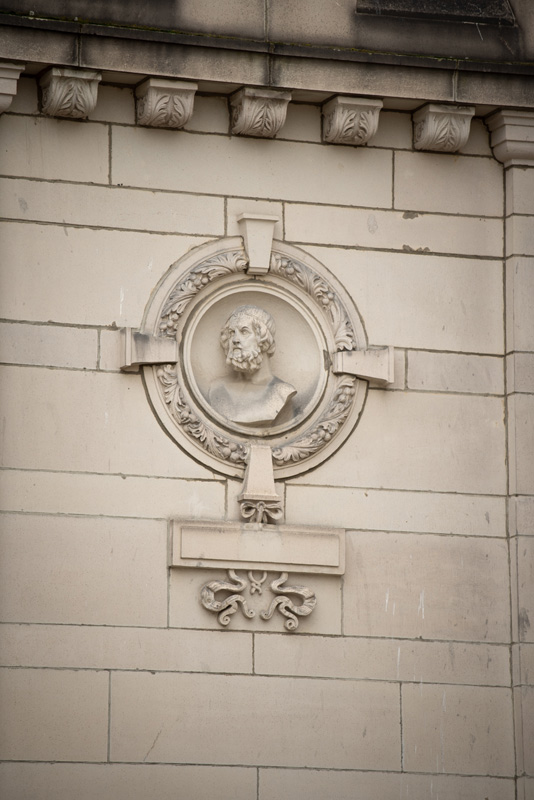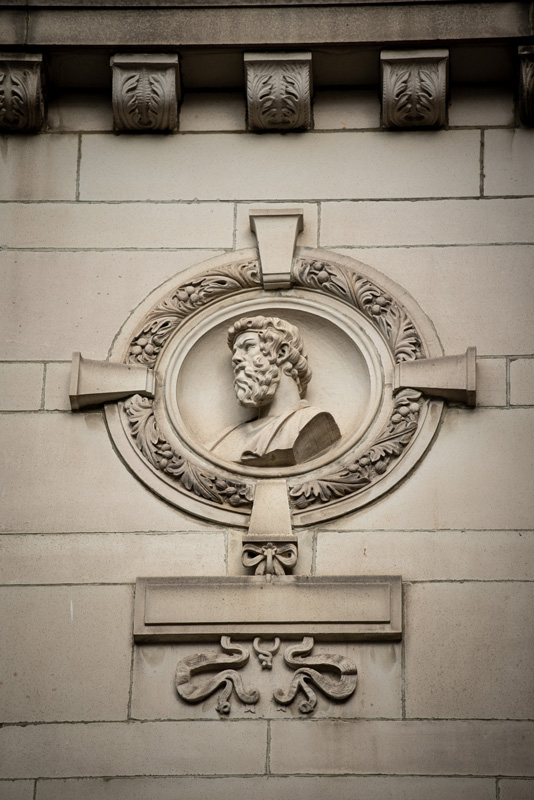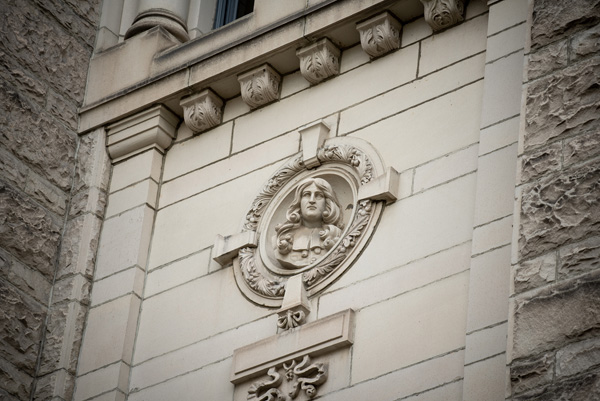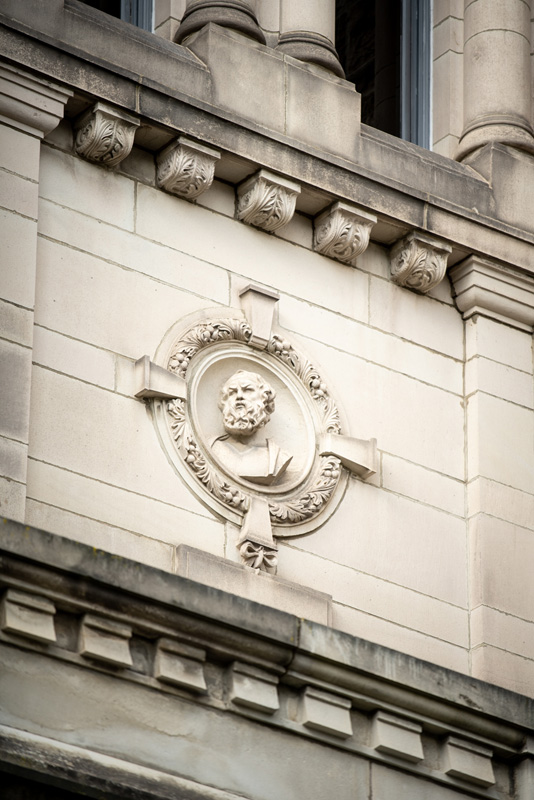Adorning the additions to the Parliament Buildings are numerous statues of historical and symbolic figures carved from stone. These figures were chosen by the provincial librarian E.O.S. Scholefield in consultation with architect Francis M. Rattenbury, while most of them were either carved by artist Charles Marega, or his assistant, Bernard Carrier.
Of the historical figures, there are 14 statues representing men “famous in the history of British Columbia or of the waters of the Pacific” [Colonist, December 19, 1913, p. 2] that were carved by Mr. Marega. They are as follows, starting at the east side of the Legislative Library (in the courtyard where the School Entrance is located) and wrapping around the exterior of the Library to the west side:
- Chief Maquinna
- Captain George Vancouver
- Sir Matthew Baillie Begbie
- Dr. John McLoughlin
- Dr. John Sebastian Helmcken
- Captain James Cook
- Sir James Douglas
- Sir Francis Drake
- Sir Alexander Mackenzie
- Simon Fraser
- Lord Edward Bulwer-Lytton
- Sir Anthony Musgrave
- David Thomson
- Col. Richard Clement Moody
These are not the only figures depicting historical individuals. There are also six circular medallions with the faces of prominent literary figures from European history, which similarly line the exterior of the Library. From east to west, the faces on each of the medallions are: Homer, Dante, Shakespeare, Sophocles, Milton, and Socrates. While these figures existed long before the creation of what we now call British Columbia, each of them strongly influenced European writing and philosophy, and many of their works remain the topic of much discussion in today’s literary communities. Their historical significance is likely the reason why they were chosen by E.O.S. Scholefield to be included on the Library’s exterior. Each medallion was carved by Mr. Carrier.
There are several symbolic figures along the Library’s exterior as well. The roof of the Legislative Library includes four domes, and on the three outward-facing corners of each dome are three statues of women, sometimes referred to as the “Allegorical Women” or “Muses”. Each of these twelve statues were carved by Mr. Carrier and have four distinct styles:
- Music: Three statues have a Lyre in their left hand, with their right hand plucking its strings
- Sculpture: Three statues have a bust in their left hand, with their right hand holding a mallet and chisel
- Painting: Three statues have a painting palette in their left hand, and a writing utensil in their right
- Architecture: Three statues have a scroll unrolled between their two hands, while they are also holding a ruler, a set-square, and dividers
More symbolic figures are located along the exterior of the Parliament Buildings’ administrative wings, also built as part of the 1912-1915 additions to the Buildings. Atop the southern-most end of the west administrative wing is a statue of a woman wearing an ancient Greek toga with the word “Law” carved onto a tablet below. This statue also holds a book with the word “Law” inscribed on its cover. Likewise, atop the south end of the east administrative wing, there is a statue of a woman with armour and a sword. While this statue likely represents “Justice”, the tablet located below it was left blank after its construction. It is not known who carved these two figures, but the process was likely supervised by Francis M. Rattenbury since he was responsible for the design and construction of the additions.








